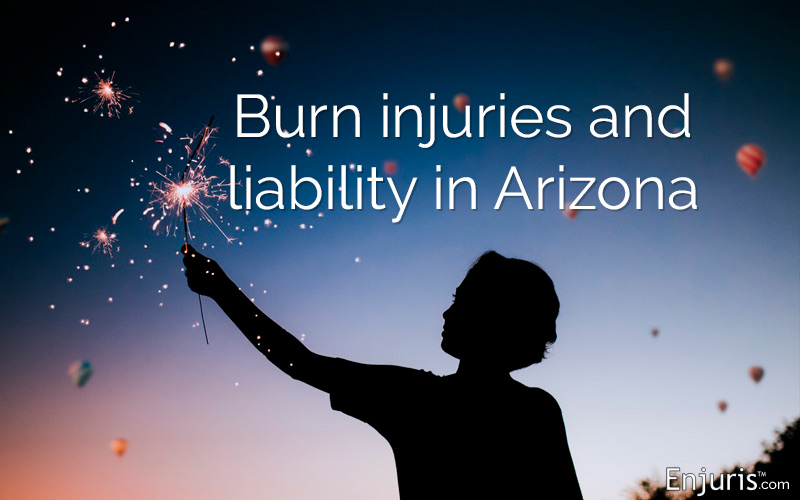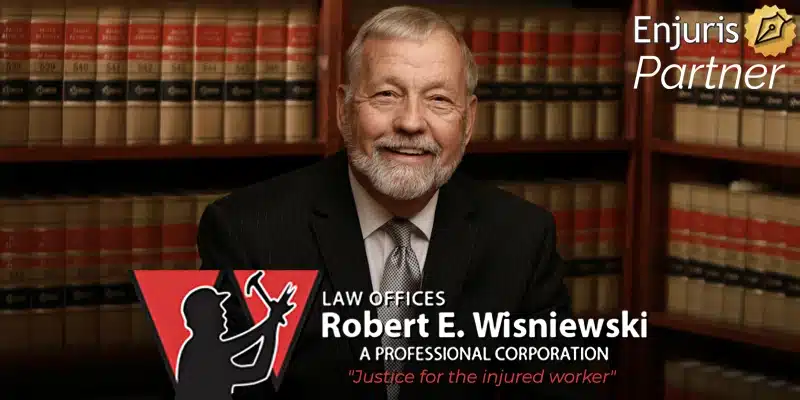
Take legal action to recover damages for your burn injury
According to the American Burn Association (ABA), roughly 486,000 burn injuries require medical treatment in the United States every year. The Arizona Burn Center alone treats more than 5,000 children and adults every year.
If your burn injury was caused by the careless act of another person or entity in Arizona, you may be able to sue for negligence or wrongful death. If your burn injury was the result of a workplace accident, you may be able to file a workers’ compensation claim.
Let’s take a closer look at the common causes and types of burn injuries, the legal remedies and compensation available, and finally some tips on what to do if you or a loved one suffer a burn injury.
Common causes of burn injuries
Burn injuries vary considerably, but the most common causes according to the ABA include:
- Fire (43%)
- Scalding (34%)
- Contact with a hot object (9%)
- Electrical currents (4%)
- Chemicals (3%)
- Other (7%)
The most common places where burns occur include:
- Home (73%)
- Work (8%)
- Street/highway (5%)
- Recreational/sport facilities (5%)
- Other (9%)
Classification of burn injuries
Burns are classified based on how deeply they penetrate the surface of the skin. The three classifications are:
- 1st-degree burn. A minor burn that affects only the outer layer of the skin (epidermis). This burn may cause redness and mild pain.
- 2nd-degree burn. A burn that affects both the epidermis and the second layer of skin (dermis). This burn may cause swelling and discoloration. Blisters may develop and pain can be severe. In some cases, 2nd-degree burns can cause scarring.
- 3rd-degree burn. A burn that reaches to the fat layer beneath the skin. Burned areas may turn black, brown, or white. The skin may appear leathery. These burns can destroy nerves, causing numbness, and will almost certainly leave permanent scars.
While 3rd-degree burns are the most serious, any burns that cover the hands, feet, face, groin, or buttocks, can be potentially serious.
Complications of burn injuries
If you’re injured in a burn accident and are entitled to damages for your injury, you will (in most cases) be granted compensation for any future complications caused by the burns. Common complications according to the Mayo Clinic include:
- Bacterial infections (which may lead to sepsis)
- Fluid loss, including low blood volume (hypovolemia)
- Low body temperature (hypothermia)
- Breathing problems (from the intake of hot air or smoke)
- Bone and joint problems (from when the scar tissue causes the shortening and tightening of skin, muscles, or tendons)
Burn injury lawsuits
The vast majority of lawsuits for burn injuries will be based on negligence. Negligence occurs when a person or entity is careless and that carelessness leads to an injury. There are 4 elements that you (the plaintiff) must prove in order to establish negligence:
- Duty. You must prove that the defendant owed you a duty of care. A duty of care arises when the law recognizes a relationship between you and the defendant requiring the defendant to exercise a certain standard of care so as to avoid harming you. In most cases, the applicable standard of care is the degree of care that a “reasonable person” would exercise under the circumstances.
- Breach. You must prove that the defendant breached the duty of care. A breach occurs when the defendant fails to meet the standard of care required.
- Causation. You must prove that the injury was caused by the defendant’s breach.
- Damages. You must prove that you actually suffered some sort of injury.
Types of burn accidents that may be caused by another person’s negligence vary widely, but may include:
- Burns from a defective product (such as a defective e-cigarette)
- Chemical spills at work
- Fires from car crashes
- Apartment fires
- Exposed power lines
What if the burn injury occurred at work?
Most burn injuries occur at home, but some occur at work. Construction workers and electricians may be particularly at risk for work-related burn injuries. If a burn injury occurs at work you may be able to receive workers’ compensation insurance.
Workers’ compensation is a form of insurance that pays medical expenses and lost wages to employees who are injured while doing their job. The vast majority of Arizona employers are required to carry workers’ compensation insurance.
In Arizona, workers’ compensation is no-fault insurance. This means that you don’t need to establish that your employer or colleague was negligent in order to receive workers’ compensation benefits. You only need to establish that the burn occurred while you were performing a work-related task.
Possible compensation in an Arizona burn injury case
Compensation for a burn injury will differ depending on whether you’re filing a negligence claim or a workers’ compensation claim. In the case of a negligence claim, the following damages may be available:
- Economic damages (medical expenses, lost income, etc.)
- Non-economic damages (pain and suffering, emotional distress, etc.)
- Punitive damages (in cases where the defendant’s actions were grossly negligent or intentional)
In the case of a workers’ compensation claim, the following compensation may be available:
- Medical benefits (payment for medical treatment that is reasonable and necessary)
- Income replacement benefits (compensation for past and future lost wages that result from the burn injury)
- Death benefits (for certain survivors if the burn victim passes away from the burns)
The main difference in terms of compensation between a negligence lawsuit and a workers’ compensation claim is that the amount you can recover in a workers’ compensation claim is limited (i.e., “capped”), whereas there’s no damage cap for a negligence claim. Also, you can’t receive punitive damages in a workers’ compensation claim, but you can receive punitive damages in a negligence claim so long as the defendant’s actions were intentionally or grossly negligent.
What to do if you’re burned
According to the Arizona Burn Center, there are 8 steps you should take after suffering a burn injury that can make a significant difference in the ultimate severity of your injury. The 8 steps are:
- Stop the burning process. Remove the source of heat. If your clothing is on fire: (1) stop (don’t run away, as running will only fan the flames), (2) drop (drop to the ground and cover your eyes), and (3) roll (roll backwards and forwards to put out any clothing that’s on fire).
- Remove all burned clothes. Clothing may retain heat and cause a more significant injury. If clothing sticks to the skin, cut and tear around the section in order to preserve the skin tissue.
- Pour cool water over the burned areas. Pour cool water for 3-5 minutes (30-40 minutes for a chemical injury). Don’t pack the burned areas in ice, as this may increase the extent of the injury and cause hypothermia.
- Remove all jewelry and tight clothing from the burned areas. Swelling in burned areas occurs immediately so this is particularly important for anything around your neck.
- Don’t apply ointments of home remedies. These may cause infection due to their oil base.
- Cover burns with a clean and dry dressing, bandage or sheet.
- Keep yourself warm.
- Seek medical attention as soon as possible.
Talking to a lawyer
If you need some assistance through this difficult process, engage with the resources provided by the ABA above and speak with an Arizona burn injury lawyer who is well versed in this area. They will be able to help you explore your legal options.
See our guide Choosing a personal injury attorney.

